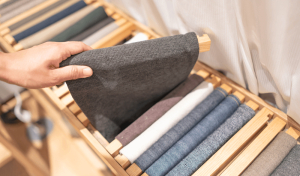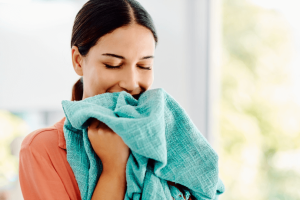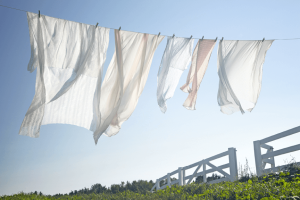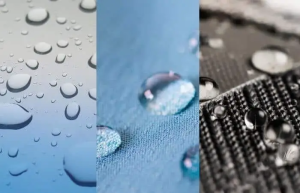What is Textile Finishing?
Woven fabrics, knitted fabrics and other types of fabrics under the loom, after the dyeing and finishing process. Such as practice bleaching, dyeing or printing, and finishing processes such as processing, known as the scope of finishing. The dyeing and finishing process refers to the fabric by bleaching, dyeing, and printing process to improve and enhance the quality of the fabric, giving the textile special features for the textile market. These printing and dyeing processes belong to the category of fabric finishing process.
The finishing process definition is a technical treatment to give fabrics with colour effect, form effect (glossy, suede, stiffness, etc.) and real effect (impermeable, non-felt shrinkage, non-iron, non-moth-eaten, flame-resistant, etc.). The finishing process in the textile industry is the process of improving the appearance and hand feel of fabrics through chemical or physical methods and giving special functions, which is an essential process for textiles.
The Purpose of Fabric Finishing
The purpose of textile finishing can be broadly divided into the following aspects:
- To make the textile width neat and uniform, size and shape stability. Finishing methods such as stenting, mechanical or chemical shrinkage, wrinkle and heat setting.
- Enhance the appearance of textiles. Including the improvement of textile lustre, whiteness, enhancement or attenuation of textile surface fluff. Finishing methods such as whitening, rolling, electro-optical, textile, grinding, shearing and shrinking.
- Improve the textile feel. Mainly using chemical or mechanical methods to make textiles such as soft, smooth, full, stiff, light or thick and other comprehensive touch feelings. Finishing methods such as softness, stiffness, and weight gain.
- Improve the durability of textiles. Mainly using chemical methods to prevent sunlight, atmosphere or microbial damage to the fibres or erosion, to extend the service life of textiles. Finishing methods such as anti-moth, and anti-mould finishing.
- Give the textile a special performance. The textile has certain protective properties or other special features. Finishing methods such as flame retardant, antibacterial, water repellant, oil repellant, UV protection and antistatic.
Finishing methods can be divided into two categories: physical finishing and chemical finishing. According to the purpose of finishing and the different effects produced, it can be divided into basic finishing, appearance finishing and functional finishing.
Methods of Physical Finishing
Hand Feeling Finishing
The feel of textiles and fibre raw materials, yarn varieties, fabric thickness, weight, tissue structure and dyeing and finishing processes have a relationship. As far as the fibre material is concerned, silk fabrics feel soft, hemp fabrics are stiff, and tweed fabrics are loose and rough with elasticity. Here the hand feel finishing only refers to the stiffness finishing and soft finishing.
Firming Finishing
Tough finishing is the use of film-forming polymer substances made of finishing paste dipping rolled on the fabric so that it adheres to the fabric surface. After drying, a film is formed to cover the surface of the fabric. This gives the fabric a smooth, thick, plump and stiff feel.
Soft Finishing
One of the soft finishing methods is to make the fabric feel softer with the help of mechanical action. Usually use a three-roller rubber blanket pre-shrinking machine, to properly reduce the operating temperature, and pressure, speed up the speed, can get a softer feel. If the fabric through several passive square guide cloth rods, and then into the soft rolling point on the rolling machine for rolling, can also get a smooth and soft feel. But this soft finishing method does not resist washing, most of the current softening agents for soft finishing.
Shaping Finishing
Shape finishing including stenting and mechanical pre-shrinkage of two kinds of finishing. Shape finishing to eliminate the fabric in the previous processes in the accumulation of stress and strain, so that the fabric fibres can be in a more appropriate natural arrangement of the state, to reduce the deformation of the fabric factors. The strain accumulated in the fabric is the main cause of fabric shrinkage, wrinkles and roughness.
Stretch Finishing
The principle of stenter finishing: stenter finishing, also called fixed-width finishing, is the use of cotton, viscose fibre, silk, wool and other moisture-absorbing hydrophilic fibres, which have a certain degree of plasticity in the wet state. The thermoplasticity of synthetic fibres, the width of the door slowly widened to the required size, thus eliminating some of the internal stress, adjusting the warp and weft yarns in the fabric in the form of the fabric, so that the width of the fabric door neat, weft skew is corrected. At the same time, the fabric is dried and cooled to obtain a more stable size (mainly referring to the weft direction), to meet the specifications of the finished product of printing and dyeing.
The role of stenter finishing: the width of the fabric to the standard size, correcting the fabric in the printing and dyeing process of uneven width, weft skew, aurora and other shortcomings. The stretching project established in the fabric contains appropriate moisture, the use of mechanical clamps to the fabric edge gradually widened, and slowly dried, to obtain temporary stereotypes. The width of the fabric before and after stenting should be a certain limit, otherwise, it will cause a serious shrinkage phenomenon.
Mechanical Pre-shrinkage Finishing
Mechanical pre-shrinkage finishing after dyeing and finishing of dry fabrics, if in a relaxed state by water wetting, the fabric of the warp and weft to the direction of the obvious contraction will occur, this phenomenon is known as shrinkage. Usually, the length difference of the warp or weft direction before and after washing the fabric according to the test standard, which accounts for the percentage of the length before washing, is used to indicate the shrinkage rate of the fabric in the warp or weft direction.
Mainly to solve the problem of warp shrinkage, so that the fabric weft density and warp weaving shrinkage adjust to a certain extent and make the fabric with a relaxed structure. After the mechanical pre-shrinkage of the fabric, not only “drying and shaping” deformation is very small, but also in the wetting, due to the warp and weft still leaving enough room. This will not be due to fibre swelling caused by the warp length of the fabric to shorten, that is, to eliminate the potential contraction of the fabric that exists within the fabric, so that it shrinks back in advance, which will reduce the shrinkage rate of the finished product.
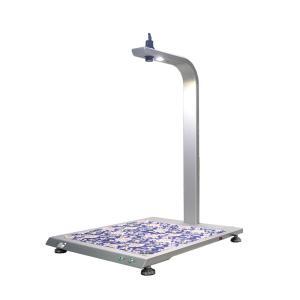
Appearance Finishing
The main contents of fabric appearance finishing are rolling finishing, electro-optical finishing, rolling finishing and whitening finishing of bleached fabrics. After finishing can make the fabric appearance to improve the beautification, such as gloss increase, flatness increase, the surface rolled into a concave-convex pattern and so on.
Polishing, Electro-optical and Texturing Mechanical Finishing
Polishing, and electroluminescence to enhance the fabric lustre are the main, rolling patterns that can make the fabric with the three-dimensional effect of a concave-convex pattern. Polishing, electro-optical and rolling finishing are purely the use of mechanical processing, the effect is not lasting, such as the joint application with the resin finishing, which can be obtained wash-resistant finishing effect.
Rolling Finishing
This finishing method generally can be divided into ordinary rolling, friction rolling electro-optical and so on. Through the role of mechanical pressure, temperature, and humidity, with the help of fibre plasticity, the fabric surface flattens, yarn flattening, to improve the fabric surface lustre and smoothness.
Electro-optical Finishing
Electro-optical machine is composed of a hard steel roller with a certain angle and density of twill lines engraved on the surface and another soft roller with elasticity. The hard roller can be heated inside, in the heating and certain humidity conditions rolling fabric, in the fabric surface pressure out of parallel and neat twill money. Thus the incident light produces regular reflection, to obtain such as silk-like high gloss surface. Horizontal satin fabric finishes more after the electro-optical finishing. Electro-optical hard roller surface twill density varies depending on the thickness of the yarn, yarn fine fabrics should be used with a greater density of 8 ~ 10 / mm twill for the most common. The slant direction of the engraved lines should be consistent with the twist direction of the main yarns on the fabric surface.
Ginning Finishing
Similar to the electro-optical finishing, the surface of the ginning hard roller is engraved with a positive pattern, and the soft roller is engraved with a negative pattern corresponding to the hard roller, and the two coincide with each other. The fabric passes through the soft and hard rolls engraved with corresponding patterns, and under the action of moisture, heat and pressure, it produces concave and convex patterns. A light rolling machine is also called a copying machine, the hard roller is a copper roller for printing, and the soft roller is a nitrile rubber roller (active roller), copying the hard roller’s engraved pattern is shallow, the soft roller does not have obvious corresponding negative pattern, the pressure when copying is also small, the degree of pattern on the fabric is also shallow, and there is a sense of hidden flowers.
Brightening Finishing
Fabric after bleaching, often with a trace of yellow-brown colour light, not easy to do a pure white degree, often use the fabric whitening method to increase the white feeling. There are two methods of whitening:
On the blue whitening method
A small amount of blue or purple dyes or paints to make the fabric colouring, the use of pigment colour complementary effect, so that the reflection of the fabric in the blue-violet light is slightly heavier, the fabric looks whiteness improved, but the brightness is reduced, slightly grey feeling, in recent years has been rarely used alone only for fluorescent whitening of the colour and light adjustment.
Fluorescent whitening method
Fluorescent whitening agent dissolved in water is colourless, its chemical structure is similar to dyes, can dye fibres, fluorescent whitening agent itself is colorless, but dyed fibers can be excited in the ultraviolet light, emitting blue-violet fluorescence visible to the naked eye, and the textile itself reflected a trace of yellowish-brown light mixing complementary synthesis of white light, the fabric will appear whiter, due to the reflection of the total intensity of the increase in the brightness has increased, but the effect is slightly worse in the absence of ultraviolet light. But in the absence of ultraviolet light under the conditions of the light source, the effect is slightly worse.
Resin Finishing
Fabric resin finishing is developed with the development of polymer chemistry. The earliest formaldehyde as a finishing agent, followed by urea – formaldehyde addition product treatment of viscose fibre fabrics, get a good anti-wrinkle and shrinkage effect, for today’s resin finishing laid the foundation. With the development of science and technology, cotton fabric resin finishing technology has also made great progress, which roughly experienced a wrinkle shrinkage, washable and wearable and durable pressing (D.P.) finishing several stages of development.
Commonly used resins for fabric finishing
There are several major types of resins used for fabric finishing, but N-hydroxymethylamide compounds are still used most. Commonly used resins for finishing are as follows:
Urea-formaldehyde resin (UF resin)
Viscose fibre fabrics with urea-formaldehyde resin finishing, fabric feel plump, shrinkage reduction, dry and wet strength increased significantly, wrinkle resistance improved. Urea-formaldehyde resin is prepared with urea and formaldehyde, a wide source of raw materials, is easy to prepare, and low cost, but can not be used for cotton fabrics, because cotton fabrics with urea-formaldehyde resin finishing, the strength drops too much, the amount of free formaldehyde is high.
Melamine formaldehyde resin (MF resin)
MF resin is close to UF resin like primary condensate. As the molecular weight of MF resin is larger, the washing resistance is better than UF resin, and it can be used for cotton fabric finishing. Not only can it obtain better anti-shrinkage and anti-wrinkle performance, but the loss of strength is also smaller than that of UF resin. However, there is a yellowing phenomenon after finishing by MF resin, so it can not be used for bleaching fabric resin finishing. After etherification of MF resin primary condensate with methanol, its stability can also be improved.
Dihydroxymethyl dihydroxy vinyl urea resin (DMDHEU or 2D resin)
2D resin is a kind of resin which is used more in our country at present, and its performance is better than UF and MF resin. The fabric after finishing has good washing resistance and is not easy to be hydrolysed. The resin primary condensate itself has low reactivity, it is not easy to generate polymer condensate when placed, and can be stored for a long time. Only in the use of conditions with the fibre, small smell, direct dyes and reactive dyes sunlight fastness effect is small, applied to durable pressing (D.P) finishing is very suitable, but the chlorine resistance performance is poor.
Methods of Chemical Finishing
In addition to being used in general daily life, textile articles can also be improved in their range of applications after some special finishing processes, such as water repellency, flame retardancy, anti-static, stain resistance, and so on. These properties of general textiles do not have, but after special finishing methods to obtain, so this type of finishing method is also known as special finishing.
Waterproof Finishing
The different processing methods can be divided into two categories: one is a coating method on the surface of the fabric to impose a layer of water-insoluble continuity of the film, this product and impermeable to water, but also airtight, should not be used as an general apparel products, and is suitable for the production of rain tarpaulin, umbrellas and so on. Another type of finishing method is to change the surface properties of the fibre, so that the hydrophilic surface of the fibre into hydrophobic, while the fabric between the fibres and yarns still retains a large number of pores, so that the fabric can maintain breathability, but also is not easy to be wet by the water, suitable for the production of rain and wind clothing fabrics. This breathable waterproof water finishing is also known as water-repellent finishing. Water-repellent finishing mainly has the following methods.
Antistatic Finishing
Clothes due to friction with static electricity, often make the skirt adheres to the legs, and the coat sucked tightly in the underwear, in some explosive places will also be due to static sparks leading to an explosion.
The printing and dyeing finishing process is often used in the durability, and external application of static preventive agents. This kind of static electricity preventive agent requirements with durability and an anti-static effect does not affect the style of fabrics, does not affect the dyeing and printing of fabrics and the colour of the dyeing and printing of the firmness of the colour, other additives have compatibility, no odour, non-toxicity to human skin, and so on. Commonly used polymer surfactants, including anionic type, and non-ionic type. Cationic type. The above antistatic properties are used to increase the hygroscopicity of the fibre surface to inhibit charge accumulation.
Flame Retardant Finishing
Fabrics after flame-retardant finishing, can not reach the degree of non-combustible such as asbestos, but can deter the spread of flame when the source of ignition removed no longer burns, and does not occur residual flame-negative combustion. Flame-retardant finishing fabrics can be used in the military sector, industrial transport sector, and civil products, such as carpets, curtains, curtains, work clothes, bedding and children’s clothing.
Selection of flame retardant, in addition to the flame retardant effect and durability must be considered, but also pay attention to the strength of the fabric, feel, appearance, fabric dyes and colour fastness of the colour has no adverse effect; on the human skin with or without irritation, flame retardant in the fabric when burning by heat with or without poisonous gas, and other finishing agents, such as co-tolerance.
In summary, there are a number of different finishing processes for textiles that can be used to ensure the final quality and appearance of textiles. These processes aim to improve the feel, colour, comfort and durability of the textile.
